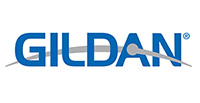.jpg)
Tomahawk (missile) Shirt
A classic cotton tee emblazoned with the Wikipedia article on Tomahawk (missile) ↗.
cotton tee emblazoned with the Wikipedia article on Tomahawk (missile) ↗.- Preshrunk jersey knit
- Seamless double-needle 2.2 cm collar
- Taped neck and shoulders
- Tear away label
- Double-needle sleeve and bottom hems
- Quarter-turned to eliminate centre crease
The BGM-109 Tomahawk () Land Attack Missile (TLAM) is an American long-range, all-weather, jet-powered, subsonic cruise missile that is primarily used by the United States Navy and Royal Navy in ship and submarine-based land-attack operations.
Developed at the Applied Physics Laboratory of Johns Hopkins University under James H. Walker near Laurel, Maryland, the Tomahawk emerged in the 1970s as a modular cruise missile first manufactured by General Dynamics. The Tomahawk aimed to fulfill the need for a medium- to long-range, low-altitude missile with diverse capabilities. Its modular design allows for compatibility with a range of warheads, including high-explosive, submunitions, and bunker-busters. The Tomahawk can use a variety of guidance systems, including GPS, inertial navigation, and terrain contour matching. Over a dozen variants and upgraded versions have been developed since the original design, including air-, sub-, and ground-launched configurations with both conventional and nuclear armaments. The Tomahawk's manufacturing history has seen several transitions. General Dynamics served as the sole supplier in the 1970s. From 1992 until 1994, McDonnell Douglas was the sole supplier of Tomahawks, producing Block II and Block III versions and remanufacturing many Tomahawks to Block III specifications. In 1994, Hughes Aircraft, having purchased General Dynamics' missile division in 1992, outbid McDonnell Douglas to become the sole supplier of Tomahawks. A joint venture between Hughes and Raytheon manufactured the missile from 1995 until Raytheon's acquisition of Hughes in 1997, solidifying their position as the sole supplier. In 2016, the US Department of Defense purchased 149 Tomahawk Block IV missiles for $202.3 million. As of 2024, Raytheon remains the sole manufacturer of non-nuclear, sea-launched Tomahawk variants.
About Wikishirt
Wikishirt is a retail experiment that lets you buy a shirt with any Wikipedia Article printed on it. There are over 5 million Wikipedia articles, so we have over 5 million shirts.Check out our homepage for random featured shirts and more!